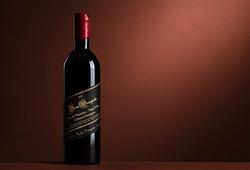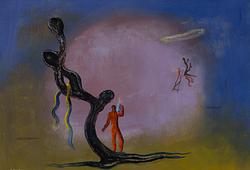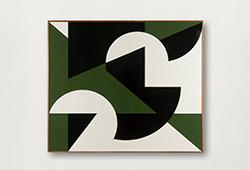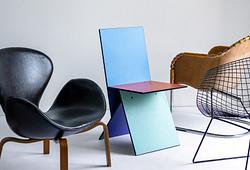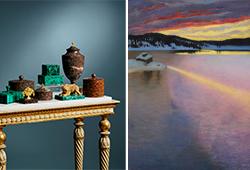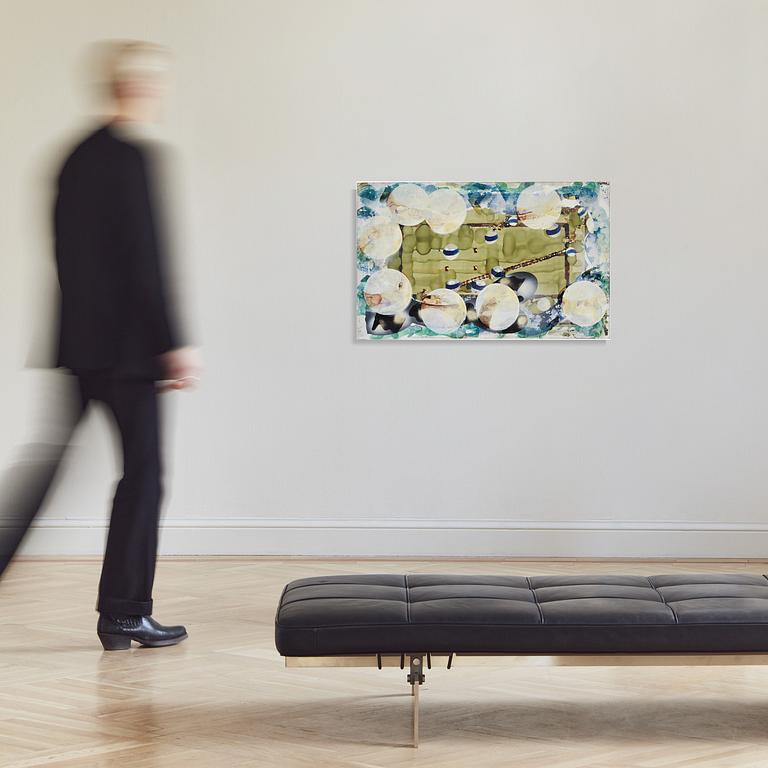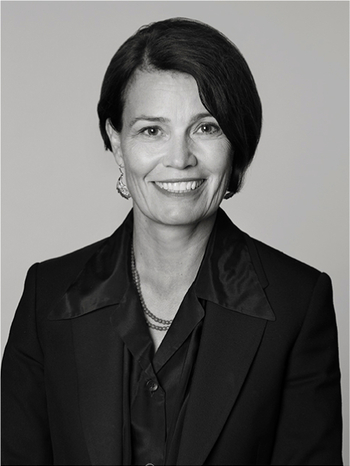Carl Fredrik Reuterswärd
"Spel"
Signed Carl Fredrik Reuterswärd and dated 1963 on the reverse. Canvas 62 x 100 cm.
Alkuperä - Provenienssi
Stockholms Auktionsverk, "Eclectic & Decorative", 15 September 2022, cat. no. 2246419.
Muut tiedot
Carl Fredrik Reuterswärd was a central figure in postwar art. His extensive and multifaceted artistic career spanned nearly seven decades, during which he worked in many mediums, constantly challenging both himself and the establishment. Only Öyvind Fahlström had a greater impact on the global stage, and no other Swedish artist possessed the same international network, connecting with figures from Marcel Duchamp to critics such as Susan Sontag. Well-read, intellectual, verbal, playful, and virtuosic, Reuterswärd created some of his most important works in the early 1960s, including the large painting Spel featured in this auction.
Reuterswärd studied under Fernand Léger in Paris in 1951 and at the Royal Institute of Art in Stockholm from 1952 to 1955. As a professor of painting at the Royal Institute of Art from 1965 to 1969, he introduced laser and holography as art forms in 1965. In the fall of 1974, he took a guest professorship at the Minneapolis College of Art and Design in the USA. He also lived and worked in Lausanne, Switzerland.
The year 1963, when Spel was created, was full of creative output and artistic exploits for Carl Fredrik Reuterswärd, and it also became a turning point in his career. In March of that year, he participated in a Fluxus evening under the pseudonym Charlie Lavendel. Hidden in the dark, he sprayed lavender oil in the hall, causing the entire audience to fall asleep. That same year, he auctioned a ten-kilogram pike at Moderna Museet, which was purchased by artist Lars Hillersberg. His sense of humor was also evident in an advertisement he placed in the New York Herald Tribune that year, which read: “CARL FREDRIK REUTERSWÄRD Closed for holidays 1963–1972.” The announced hiatus carried both seriousness and humor and was a way to break free from an increasingly commercially driven art climate.
He is best known for the sculpture Non-Violence, depicting a revolver with a knotted barrel. It was created in response to the murder of John Lennon in 1980 and has become a symbol of the global peace movement. Reuterswärd had met Lennon while living in Switzerland, and Yoko Ono asked him to create an artistic tribute to Lennon and his vision of peace. The sculpture was initially placed in Central Park as a memorial, but in 1988 it was donated to the United Nations by the government of Luxembourg and installed in front of the UN headquarters in New York.
The Sprengel Museum in Hanover houses an extensive collection of Carl Fredrik Reuterswärd’s works, and he is represented in numerous major museums worldwide, including the Museum of Modern Art in New York, Centre Pompidou in Paris, Musée d’Art Moderne Paris, Tate Modern in London, Guggenheim Museum in New York, Museum of Holography New York, Kunsthaus Zürich, Moderna Museet in Stockholm, Statens Museum for Kunst in Copenhagen, Ateneum in Helsinki, Nasjonalmuseet for kunst, arkitektur og design in Oslo, National Gallery of Art in Washington D.C., Skissernas Museum in Lund, Norrköpings Konstmuseum, Göteborgs Konstmuseum, Postmuseum in Stockholm, Kalmar Konstmuseum, Hallands Konstmuseum, Örebro County Museum, Länsmuseet Gävleborg, Smålands Museum, Helsingborgs Museum, and the Nationalmuseum in Stockholm.
Carl Fredrik Reuterswärd held solo exhibitions worldwide, worked in animation, and published the poetry collection Abra Makabra. He also created numerous public art installations, including works in the Stockholm subway. Through the Carl Fredrik Reuterswärd Art Foundation, significant donations have been made to Landskrona Museum and Grafikens Hus in Lund.




